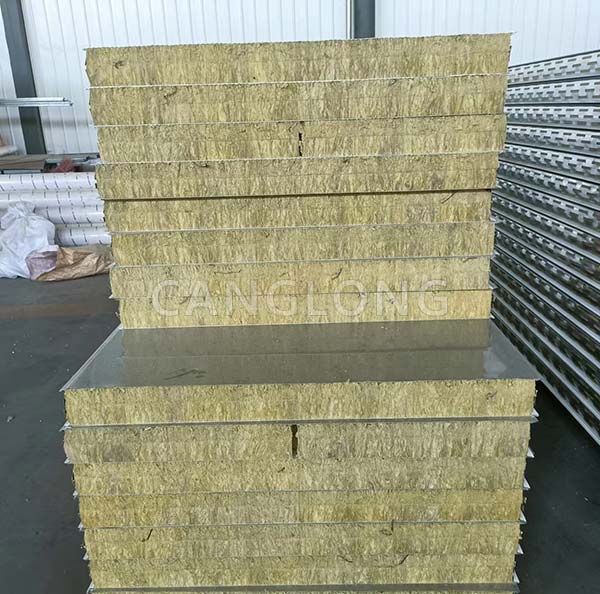How to improve the sound insulation effect of rock wool sandwich panels?
In practical applications, rock wool sandwich panels can improve the sound insulation effect in the following ways:
1. Reasonable design and layout
Wall Thickness: Increasing the thickness of the sandwich panels can significantly improve the sound insulation performance.
Multi-layer structure: The design of multi-layer rock wool sandwich panels can further enhance the sound insulation effect.
2. Sealing treatment
Seam Sealing: Ensure seams and edges between panels are treated with sealing material to prevent sound waves from traveling through gaps.
Door and window sealing: Use sealing strips around doors and windows to reduce noise penetration.
3. Sound insulation filling
Filling the cavity: Filling the sandwich panel with additional sound-absorbing material, such as glass wool or other sound-absorbing materials, to increase the overall sound insulation effect.
4. Use acoustic partitions
Acoustic panels: Adding acoustic treatment materials, such as acoustic panels, to the surface of rock wool sandwich panels can further absorb sound waves and reduce reflections.
5. Optimize installation
Fixing method: Use appropriate fixing methods to avoid sound transmission caused by direct contact with the structure.
Suspension system: The use of elastic suspension system can reduce vibration transmission and enhance sound insulation effect.
6. Consider the built environment
Location of noise sources: Consider the location of noise sources during design, and rationally lay out soundproof walls to minimize the impact of noise on sensitive areas.
Through the above measures, the sound insulation effect of rock wool sandwich panels in practical applications can be significantly improved, ensuring the quietness and comfort of the internal environment of the building.

What is the best material for sealing rock wool sandwich panels?
The following materials can be used for sealing of rock wool sandwich panel to ensure good sound insulation and prevent air penetration:
1. Polyurethane sealant
Features: Polyurethane sealant has excellent elasticity and adhesion, can effectively fill joints and resist moisture and air penetration.
2. Silicone sealant
Features: Silicone sealant has strong weather resistance, can resist ultraviolet rays and temperature changes, is suitable for outdoor use, and has high transparency.
3. Acrylic sealant
Features: Acrylic sealant is easy to apply, suitable for indoor use, and has good adhesion and flexibility.
4. Foam sealing strip
Features: Foam sealing strips can effectively fill gaps, have good elasticity and sound insulation effects, and are easy to install.
5. Rubber sealing strip
Features: Rubber sealing strips have excellent pressure resistance and sealing properties, and are suitable for sealing of doors, windows and other parts.
Select suggestions
When selecting sealing materials, environmental factors such as temperature, humidity and special requirements of the location of use should be considered to ensure a durable and reliable sealing effect.
